CADRE
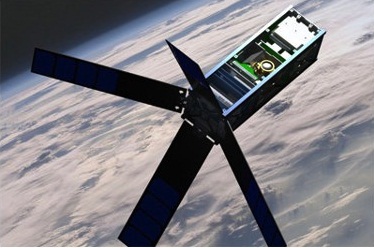
CADRE stands for ‘CubeSat investigating Atmospheric Density Response to Extreme driving‘ and is a 3U CubeSat mission sponsored by the National Science Foundation and operated by the University of Michigan’s Exploration Laboratory. The primary mission objective of CADRE is to serve as a pathfinder for the future Amanda multi-satellite mission, demonstrating a 3U CubeSat bus and testing the Wind Ion Neutral Composition Suite (WINCS) instrument in an operational environment.
Studying space weather has become increasingly important as humanity’s dependence on space-based systems is on a continuing increase and the number of satellites is on a constant incline. Information on drivers and their effects on the ionosphere and thermosphere is critical in developing techniques for forecasting satellite drag environments for collision assessments. Also, particle events in near Earth-space can adversely affect satellite communications and electronic components on spacecraft – directly impacting life on Earth. Forecasting of such events requires knowledge of the complex dynamics of energy input in Earth’s atmosphere.
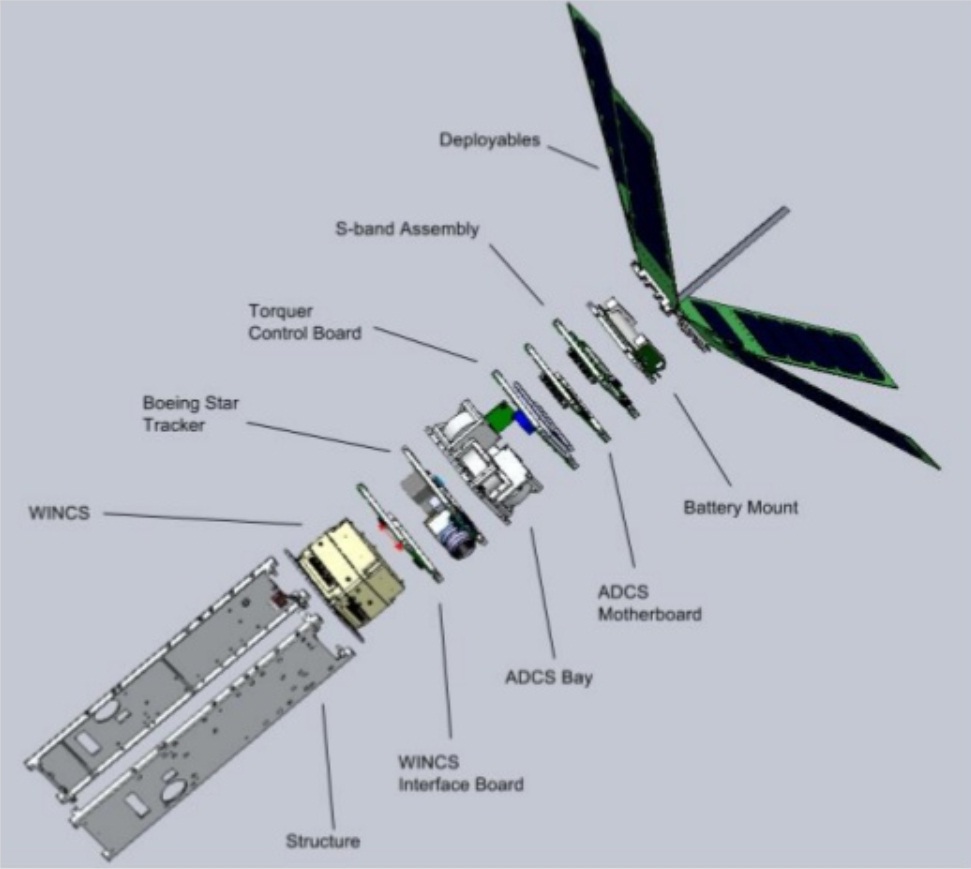
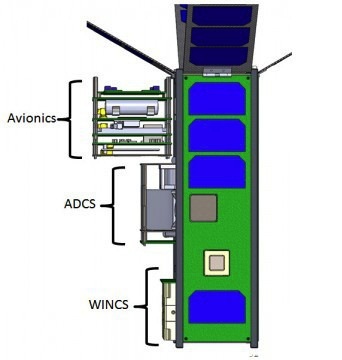
CADRE aims to study thermosphere dynamics using a suite of four electrostatic analyzers and two mass spectrometers to measure in-situ density, temperature and composition of the thermosphere as well as neutral winds and ion flows. Currently, very little such data exists and ground-based systems can not deliver data on the scales required to understand how the thermosphere is affected by energy input and the role these dynamics play in magnetosphere-ionosphere coupling.
The four-Kilogram CADRE satellite is comprised of three major elements, each taking up about one CubeSat Unit – at the top is the Avionics Section containing all electronics boards needed to control the satellite systems, in the center sits the Attitude Determination and Control System and in the aft is the WINCS payload. The satellite is outfitted with four deployable solar panels, one on each of the satellite side panel and hinged on the forward face of the spacecraft. Additional solar cells on the satellite body are used to generate electrical power. The solar panels are spring loaded and deploy after a burn resistor cuts a fishing line. The satellite hosts a total of 64 solar cells feeding a pair of Li-Ion batteries.
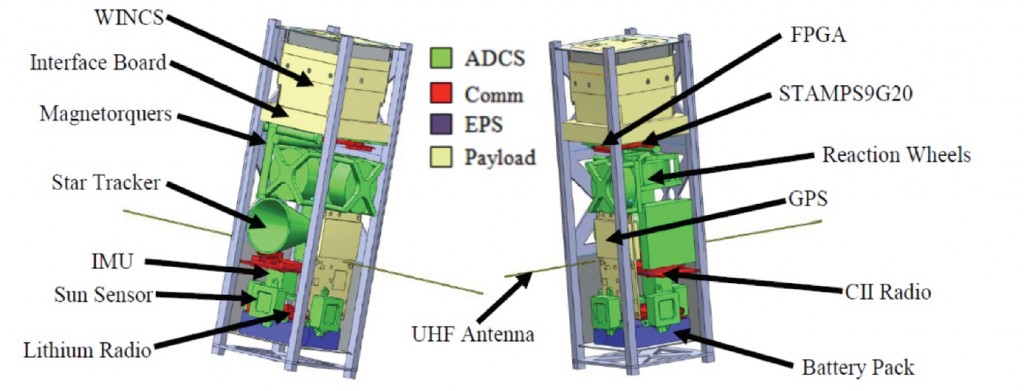
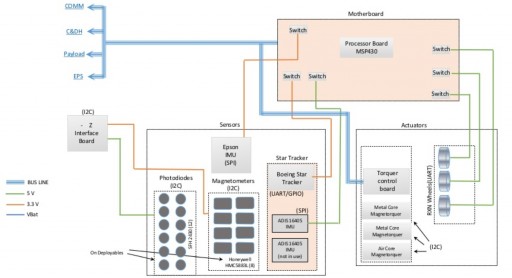
Attitude determination is accomplished by a series of photodiodes to calculate the solar vector, three Inertial Measurement Units to deliver body rates and a Star Tracker for fine-attitude determination. The CADRE satellite has three reaction wheels for attitude actuation along with a package of three magnetic torquers that are controlled based on inputs from three-axis magnetometers. The three Sinclair reaction wheels operate at up to 3,400 RPM and have a nominal torque setting of 1mNm requiring a maximum power of 0.7W when at full torque. CADRE achieves a pointing accuracy of 1.0 degrees with an attitude determination accuracy of 0.1°.
The satellite Command and Data Handling Board hosts a built-in radio system and an external card can hold a pair of SD Cards building the mass memory of the satellite. Data downlink is accomplished at the S-Band frequency while status telemetry downlink and command uplink uses the amateur UHF frequencies.
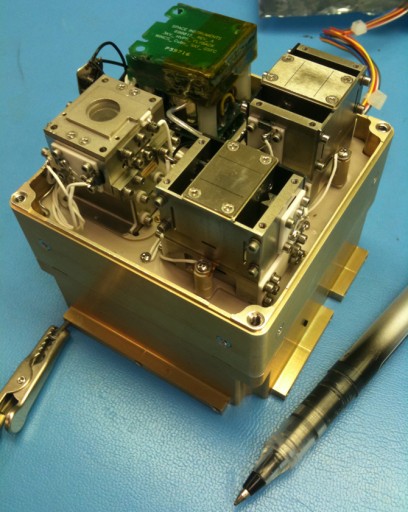
The WINCS payload has been developed by the Naval Research Laboratory and weighs 635 grams with a size of 7.6 by 7.6 by 7.1 centimeters and a power demand of 1.3 Watts. It consists of four Electrostatic Analyzers for wind and drift measurements in the horizontal and vertical direction, and a pair of Mass Spectrometers (Gated Electrostatic Mass Spectrometer) for ion and neutral composition measurements. Two different electrostatic analyzers are used on the satellite – two Wind and Temperature Spectrometers and two Ion Drift and Temperature Spectrometers while the mass spectrometers are differentiated by the species they measure, ions and neutrals.
The electrostatic analyzers use the conventional design that consists of plates biased at around 10 Volts to deflect incoming particles and measure their deflection to identify the incoming particles. Coupled to time-of-flight mass spectrometers, the analyzers can determine the particle energy.
The Small Deflection Energy Analyzer builds the heart of the electrostatic analyzers. It has two identical, but mirrored sensors, to accept ions that enter from the upper left and are deflected downwards or enter from the lower left and deflect upward. Beyond the exit slit lies the Micro Channel Plate detector system. Consisting of 15 angular pixels, each covering a field of view of 2×2° creating a total instrument field of view of 30 by 2°. Energy selection occurs in 20 discrete steps in the bias voltage that are varied at pre-programmed intervals to allow the two instruments to generate angular-energy distributions in two perpendicular planes.
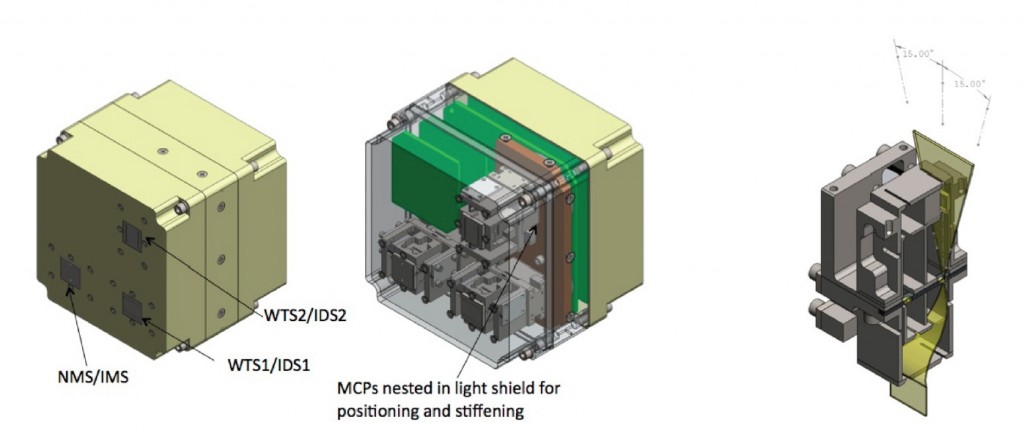
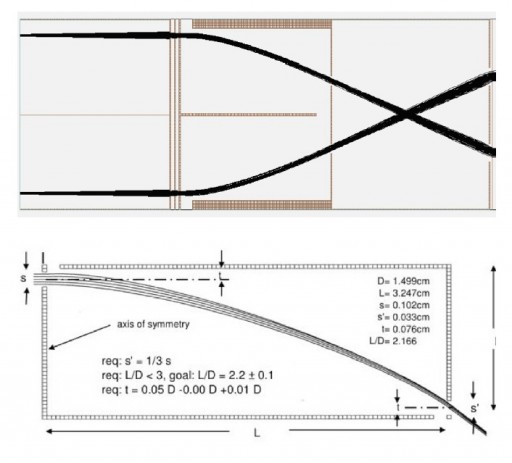
The Mass Spectrometer instruments use a time-of-flight measurement technique in which the deflection potential is alternated between being fully deactivated and turned on. After activation of the potential, particles that were within the chamber start to accelerate. Acceleration is a function of mass, meaning that low mass particles will be quickly deflected such that they come through the exit slit and strike the detector while heavier particles require more time. A measurement with nano-second accuracy yields temporal distributions from which mass distributions can be derived and particles can be identified.
The WINCS payload is pointed towards the Ram direction (along the velocity vector) to be able to measure incoming particles. Given its field of view, the instrument could be pointed as far off-Ram as 15°, but it will generally point to within one degree of the Ram direction.
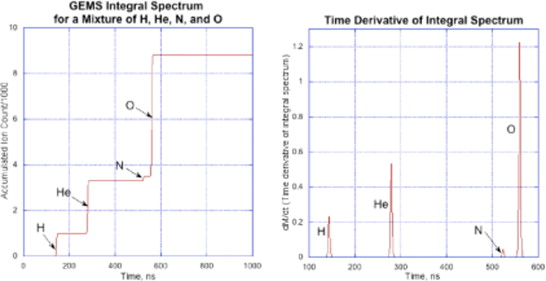
A secondary payload on the CADRE satellite is a dual-frequency GPS receiver to measure phase delays between two transmissions from the GPS satellites at L1 (1575.42 MHz) and L2 (1227.6 MHz). At transmission, the two signals are in phase and the media the signals travel through will create a phase delay given the separation between the two frequencies. This delay can be used to calculate the total electron content of the ionosphere and associated density measurements in the troposphere.
